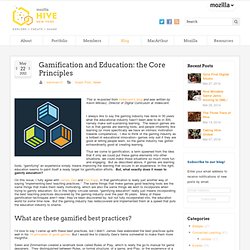

Games, Gamification in a Virtual Classroom Environment. Gamification in the virtual classroom is still in its infancy.

Currently, virtual classroom instructors often use workarounds to apply gamification techniques since many virtual classroom software packages don’t have game or gamification elements. One exception that I am aware of is EduGame Cloud which is for Adobe Connect and has a number of game features such as Crossword Puzzles and Trivia/Quizing. Check it out at EduGame Cloud. Another way we have used technology for gamification within a virtual classroom or a webinar is to use PollEverywhere and have the learners open a web window and participate in that fashion. Examples Here are some examples of doing gamification within a virtual classroom.
Another technique that virtual classroom instructional designers can apply is to let participants have some influence on the direction of the action in the classroom in real time, just like we do when we play a game. What ideas have you incorporated. Game-Based Learning & Simulations. The 100-Second Guide To Gamification In Education. 11-05.pdf (application/pdf Object) Deterding: From game design elements to gamefulness:... Gamification and Education: the Core Principles - Hive NYC. This is re-posted from Iridescent’s blog and was written by Kevin Miklasz, Director of Digital Curriculum at Iridescent.

I always like to say the gaming industry has done in 30 years what the educational industry hasn’t been able to do in 300, namely make self-sustaining learning. The reason games are fun is that games are learning tools, and people inherently like learning (or more specifically we have an intrinsic motivation towards competence). I like to think of the gaming industry as a hotbed of educational innovation– games only sell if they are good at letting people learn, so the game industry has gotten extraordinarily good at creating learning. Thus we come to gamification, a term spawned from the idea that if only we could put these game elements into other situations, we could make those situations so much more fun and engaging. But as described above, if games are learning tools, “gamifying” an experience simply means improving the learning that occurs in an experience.
15 Tips To Improve Learners' Motivation for eLearning Courses. Motivation plays an important role during eLearning experiences and our challenge is to create eLearning that our learners want to engage in.

Would you like to find out how to improve learners' motivation for eLearning courses? Motivation has been and continues to be a widely studied area across many of life’s domains. Many motivation theories focus on the amount of motivation, with a larger quantity said to result in improved outcomes. The Gamification Guide for Teachers. Positive Feedback – Lessons from a 2-Year-Old. Positive feedback drives learner engagement, motivation and success.

Is your e-learning feedback system inspiring your learners? My daughter is my biggest champion. She's in the later stages of toilet training and she's been quick to pick up on the benefits of positive reinforcement, which has worked well to shape her behavior. Now whenever I do something trivial that she finds impressive, she's quick to reward me with shouts of, "You did it, Daddy! " and "Good job". Despite the known benefits of recognition and positive feedback, companies are still doing a poor job of showing their employees appropriate appreciation.
This lack of recognition and feedback is similarly evident in many corporate e-learning programs. Shantanu Sinha: Motivating Students and the Gamification of Learning. When we started building the platform behind the Khan Academy, one of the first things we did was bring in the concept of badges and other game mechanics.

The reaction has always been interesting. Most people applaud the effort to make learning engaging and rewarding to young users. Others fear it can lead to perverse incentives or can detract from real learning objectives. As with most things, the issue is not nearly that black and white and is far more nuanced. There are definitely incorrect ways to bring gaming into education. Where Does Gamification Fit in Higher Education? [#Infographic]
College is not a game. But that doesn’t mean games can’t be used to engage students. Gamification is a relatively new word for an old concept. It’s about finding new incentives to guide students on their education journey. Fear of bad grades has never been the best way to motivate students. Gamification, a term that applies almost solely to technology, is a way of engaging students’ competitive drive and applying it to learning. If you aren’t sure you understand the concept of gamification, consider an example like the popular mobile app Foursquare. This might sound like digital nonsense — the kind of stuff that’s melting kids’ brains. The Khan Academy has made gamification a top priority, but even president Shantanu Sinha agrees that gamification’s place in education isn’t quite clear: When we started building the platform behind the Khan Academy, one of the first things we did was bring in the concept of badges and other game mechanics.
This infographic originally appeared on Knewton. Meaningfulframework.pdf (application/pdf Object) Open Yale Courses - ECON 159: Game Theory (Fall 2007)